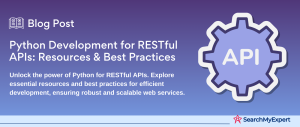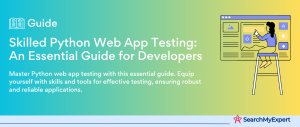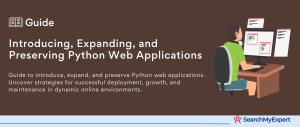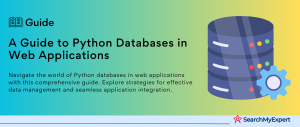Python for Web Analytics
Defining Web Analytics and its Importance in the Digital Age
In today’s digital world, understanding user behavior on websites is crucial. This is where Web Analytics comes in. It’s a technique for collecting, measuring, analyzing, and reporting web data. This practice helps businesses understand and optimize web usage, driving strategies for better engagement and conversion.
Web analytics offers insights into user behavior, traffic trends, and more. This data is gold in the digital age. It helps businesses:
- Understand Customer Behavior:
See how users interact with your website. - Optimize Marketing Strategies: Tailor campaigns based on user preferences.
- Enhance User Experience: Make data-driven decisions to improve website usability.
- Drive Business Growth: Use insights to increase conversions and revenue.
Highlighting Python’s Capabilities for Web Analytics Tasks
Why Python? Here are a few reasons:
- Flexibility and Ease of Use:
Python’s simple syntax makes data analysis tasks a breeze. - Rich Library Ecosystem: Libraries like Pandas, NumPy, and Matplotlib make data processing and visualization easy.
- Community and Support: A vast community ensures continuous learning and problem-solving.
Python’s role in web analytics involves:
- Data Collection:
Scraping and gathering data from various sources. - Data Processing: Cleaning and organizing data for analysis.
- Data Analysis:
Performing statistical analysis and pattern recognition. - Data Visualization:
Creating graphs and charts for better understanding.
Briefly Comparing Python to Other Web Analytics Tools
While Python excels, other tools also play in this field. Let’s compare:
- Google Analytics:
A go-to for basic web analytics but lacks Python’s customization and deep data analysis capabilities. - Adobe Analytics:
Offers extensive features but at a higher complexity and cost. - R Programming:
Similar to Python in data analysis but with a steeper learning curve.
Python stands out for its balance of power, ease of use, and community support. It’s a versatile tool for anyone looking to dive deep into web analytics.
Data Acquisition: The Foundation of Web Analytics
Exploring Various Sources of Web Analytics Data
Web analytics data is vast and varied. Key sources include:
- Website Logs: Server logs offer raw, detailed data about visitor activities.
- APIs:
APIs from platforms like Google Analytics provide structured data. - Web Scraping: Gathering data from various websites to analyze trends.
Each source offers unique insights. Combining them can provide a comprehensive view of web performance.
Utilizing Python Libraries for Data Retrieval and Manipulation
Python is a swiss army knife for data acquisition. Key libraries include:
- Pandas:
For data manipulation and analysis. It’s perfect for handling and transforming data sets. - BeautifulSoup:
A library for web scraping. It helps in parsing HTML and XML documents. - Requests: A tool for making HTTP requests. Essential for API interaction and web scraping.
Python’s strength lies in these libraries’ ability to work together seamlessly, making data acquisition a more streamlined process.
Addressing Data Cleaning and Pre-Processing Techniques
Raw data is often messy. Python comes to the rescue with powerful data-cleaning techniques:
- Handling Missing Values: Identifying and imputing missing data for accuracy.
- Data Transformation:
Converting data into a usable format. - Normalization:
Standardizing data ranges for meaningful comparison. - Feature Selection:
Choosing relevant features for analysis.
The goal is to prepare the data for accurate, meaningful analysis. Clean data leads to reliable insights, making this step critical in the web analytics process.
Data Analysis and Exploration: The Heart of Web Analytics
Core Data Analysis Libraries in Python
Python’s strength in data analysis lies in its libraries:
- Pandas:
A powerhouse for data manipulation and analysis. Ideal for handling tabular data. - NumPy:
Essential for numerical computing. It’s perfect for working with arrays and matrices. - Matplotlib:
The go-to library for creating static, interactive, and animated visualizations. - Seaborn:
Builds on Matplotlib, offering a higher-level interface for drawing attractive and informative statistical graphics.
These libraries form the backbone of Python’s data analysis capabilities, offering both depth and simplicity in handling complex datasets.
Demonstrating Fundamental Statistical Analysis Techniques
Understanding data requires statistical analysis. Key techniques include:
- Averages:
Understanding typical values in your data (mean, median, mode). - Correlations:
Finding relationships between different variables. - Hypothesis Testing:
Assessing theories and making predictions based on data.
These techniques help in extracting meaningful patterns and insights from the web data, guiding strategic decisions.
Visualizing Data Insights Through Graphs, Charts, and Dashboards
Data visualization is crucial in making sense of complex data sets. Python excels in this with:
- Graphs and Charts: Turning data into bar charts, histograms, scatter plots, and more for easy understanding.
- Interactive Dashboards:
Tools like Dash and Plotly create interactive web applications for more dynamic data exploration.
Visualization transforms data into stories, making it easier to communicate insights and drive action.
User Segmentation and Behavior Analysis: Tailoring Strategies for Every User
Explaining the Concept of User Segmentation and Its Benefits in Web Analytics
User segmentation is about dividing your audience into groups based on certain criteria like behavior, demographics, or engagement levels. The power of segmentation lies in its benefits:
- Personalized Marketing:
Tailor your strategies to meet the specific needs of different groups. - Improved User Experience:
Understand and cater to the preferences of various segments. - Enhanced Analytics: Gain deeper insights into different user groups for more informed decision-making.
- Optimized Resource Allocation:
Focus your efforts and resources on the most valuable segments.
In web analytics, segmentation helps in understanding not just the ‘what’ of user behavior, but the ‘why’ behind it.
Implementing Segmentation Techniques Using Python Libraries
Python, with its arsenal of libraries, is perfect for implementing segmentation:
- Scikit-learn:
A powerful tool for machine learning, including clustering algorithms for segmentation. - ClusterPy: Another library dedicated to geographic data analysis and clustering.
These libraries help in identifying patterns and groupings in user data, enabling more effective segmentation.
Analyzing User Behavior Patterns Within Different Segments
Once segments are defined, it’s crucial to analyze behavior within these groups. Key areas include:
- Session Analysis:
Understanding each user’s journey on your site. What pages do they visit? How long do they stay? - Path Analysis: Tracking the paths users take through your site. This reveals which flows are most effective at driving conversions.
Such analyses allow for a deeper understanding of user behavior, leading to more effective strategies and improved website performance.
Advanced Analytics and Modeling: Beyond Conventional Insights
Machine Learning and Predictive Analytics for Web Data
The future of web analytics lies in predictive power. Here’s where machine learning and predictive analytics enter the scene:
- Machine Learning:
Algorithms learn from data, identifying patterns and making decisions. - Predictive Analytics: Using historical data to predict future trends and behaviors.
This advanced approach shifts focus from what happened to what will happen, offering a strategic edge.
Exploring Anomaly Detection, Churn Prediction, and User Personalization through Python Libraries
Python’s libraries make these advanced analyses achievable:
- Scikit-learn: A versatile tool for machine learning tasks like classification, regression, and clustering.
- TensorFlow: Ideal for deep learning, useful in complex tasks like image and language processing.
Key applications include:
- Anomaly Detection: Identifying unusual patterns that could signify issues like fraud.
- Churn Prediction: Predicting which customers are likely to stop using a service.
- User Personalization:
Tailoring experiences based on individual user preferences.
Building and Evaluating Prediction Models for Actionable Insights
Model building in Python follows a structured approach:
- Data Preparation: Selecting and preprocessing data relevant to the problem.
- Model Selection:
Choosing the right algorithm based on the task at hand. - Training and Testing: Training the model on a dataset and testing its performance on another set.
- Evaluation: Using metrics like accuracy, precision, and recall to assess the model.
The goal is to build models that not only predict accurately but also provide insights that can be translated into action.
Reporting and Communication: Bridging Data and Decision-Making
Creating Impactful Reports and Visualizations for Stakeholders Using Python Libraries
Reporting in web analytics is not just about presenting data; it’s about telling a story. Python aids this with:
- Flask: A web framework for creating interactive web applications, making reports accessible and dynamic.
- Bokeh: A visualization library designed for creating interactive and attractive plots and dashboards.
These tools transform raw data into engaging, easy-to-understand visual stories, crucial for stakeholder engagement.
Implementing Automated Reporting Workflows with Data Pipelines and Scheduling Tools
Automation is key in efficient reporting:
- Data Pipelines:
Tools like Apache Airflow and Luigi automate the flow of data from collection to reporting. - Scheduling Tools:
Automate report generation, ensuring timely delivery of insights.
Automated workflows save time and ensure consistency in reporting, allowing teams to focus on analysis rather than manual processes.
Effective Communication of Data Insights for Informed Decision-Making
The ultimate goal of reporting is to drive action. This requires:
- Clarity: Presenting data in a clear, understandable manner.
- Relevance:
Tailoring reports to the audience’s needs and interests. - Actionability:
Highlighting key insights and suggesting next steps.
Effective communication turns data into a powerful tool for informed decision-making, driving strategies and actions that benefit the business.
Resources and Case Studies: Python in Action
Listing Relevant Python Libraries, Frameworks, and Tools for Web Analytics
Python’s ecosystem is rich with tools and libraries for web analytics. Some of the key resources include:
- Libraries for Data Analysis: Pandas, NumPy, SciPy.
- Libraries for Data Visualization: Matplotlib, Seaborn, Plotly.
- Web Scraping Tools: BeautifulSoup, Scrapy.
- Machine Learning Libraries:
Scikit-learn, TensorFlow, Keras. - Web Frameworks for Reporting: Flask, Django.
- Automation and Workflow Management:
Apache Airflow, Luigi.
These tools provide the necessary foundation for effective web analytics, catering to various needs from data collection to reporting.
Showcasing Real-World Examples of Using Python for Web Analytics
Python’s flexibility and power are best illustrated through real-world applications. Here are a few examples:
- E-Commerce Personalization: Python is used to analyze customer data, leading to personalized product recommendations.
- Website Traffic Analysis: Businesses utilize Python to track and analyze website traffic, optimizing their marketing strategies.
- Social Media Trend Analysis: Python’s ability to process large datasets is leveraged for analyzing social media trends, helping companies in targeted advertising.
These case studies demonstrate Python’s role in transforming data into actionable business strategies.
Conclusion
Python is not just a programming language; it’s a key player in the field of web analytics. Its libraries and tools offer end-to-end solutions for data-driven challenges. The real-world applications of Python in web analytics only scratch the surface of its potential.
Enhance your software capabilities with professional Python Development Service Firms.
Table of Contents
Toggle






